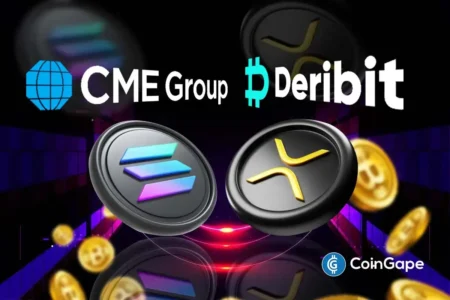Ethereum Price Projections and Institutional Accumulation: A Look at Arthur Hayes’ Predictions
Arthur Hayes, the co-founder of BitMEX, has recently heightened investor excitement with a bold prediction: Ethereum (ETH) could see its price skyrocket by 2.5 times before the end of the year. This forecast comes amid significant on-chain accumulation efforts by companies like BitMine, which has just bolstered its ETH treasury by over $417 million. With the cryptocurrency market showing signs of strength, these developments could signal a broader bullish trend for Ethereum.
Hayes stands resolutely behind his forecast of a $10,000 Ethereum, affirming its potential in the current market cycle. Speaking on the Bankless podcast, he dismissed recent price fluctuations as mere “background noise,” suggesting that the underlying bullish trend remains intact and that the cryptocurrency has yet to see its peak this cycle. Hayes even hinted at an ambitious long-term projection of $20,000. His perspective parallels that of prominent analyst Tom Lee, who predicts Ethereum prices could soar to between $10,000 and $12,000 by the end of 2025, spurred by growing institutional interest and regulatory clarity.
The Decentralized Future of Ethereum
In Hayes’ view, Ethereum functions similarly to decentralized technology giants like Nvidia or Amazon Web Services (AWS). He argues that Ethereum provides critical infrastructure for decentralized finance (DeFi), artificial intelligence (AI) applications, and institutional financial settlements. Its function as a neutral and censorship-resistant protocol offers an appealing long-term investment prospect for institutions. This sentiment has gained traction, particularly as more companies adopt Ethereum’s capabilities.
Additionally, Tom Lee’s assertion regarding the recent breakout from Ethereum’s four-year accumulation range indicates a much-anticipated price discovery phase. As Ethereum transitions beyond historical price levels, institutional investors are likely to take an increased interest, leveraging the advantages that Ethereum offers in terms of scalability, governance, and transaction efficiency. This growing institutional interest could further propel demand and usage, setting the stage for long-term appreciation of ETH’s value.
BitMine’s Massive Accumulation Strategy
As the cryptocurrency market evolves, BitMine has made headlines by expanding its position in Ethereum. Recent on-chain data indicates that the company has acquired 104,336 Ethereum tokens for approximately $417 million, solidifying its corporate treasury. The tokens were strategically transferred from exchanges like Kraken and BitGo into new wallets, reflecting a calculated accumulation strategy. This purchase elevates BitMine’s total ETH holdings to over 3.03 million, representing a significant portion—around 2.5%—of the entire supply.
Prior to this remarkable acquisition, BitMine had already invested $103 million in Ethereum just a week earlier. Their steadfast commitment amidst macroeconomic pressures showcases unprecedented confidence in Ethereum’s long-term potential. Institutional players like BitMine illustrate a broader trend, as their purchases correlate with heightened interest and accumulation among institutional treasuries and exchange-traded funds (ETFs).
Institutional Adoption at All-Time High
The bullish sentiment surrounding Ethereum is underscored by record levels of institutional adoption. Treasuries and ETFs currently hold about 12.5 million Ethereum tokens, constituting 10.3% of the total ETH supply. This surge in institutional involvement has been a vital factor in elevating Ethereum’s market standing and could influence further price increases in the near future.
Investor confidence in Ethereum has recently been bolstered by its growing attractiveness as a digital asset. Despite facing short-term price pressures due to broader economic uncertainties, the continued influx into Ethereum ETFs reveals a resilient demand. Just yesterday, Ethereum saw approximately $169 million in inflows, suggesting strong investor interest in the cryptocurrency sector, particularly in Ethereum, which remains a focal point of innovation within blockchain technology.
Market Dynamics and Future Outlook
As Ethereum experiences renewed interest and significant investment inflows, analysts believe that the momentum is just beginning. Michaël van de Poppe, a prominent market analyst, highlights the similarities between current ETH/BTC pair movements and early stages of previous market upcycles. His assertion that there is "much more upside ahead" reinforces the bullish sentiment and growing optimism for Ethereum as a premier investment option.
The cryptocurrency landscape is witnessing transformative changes, with Ethereum at the forefront, driven by adoption in DeFi, AI, and institutional financial services. Experts argue that if the current trends continue, we may see Hayes and Lee’s ambitious price predictions materializing. As Ethereum lays the groundwork for future developments, these trends suggest a promising path forward.
Conclusion: Considering the Implications
In summary, Arthur Hayes’ projections for Ethereum, coupled with the significant accumulation by BitMine and other institutional players, paint a highly optimistic picture for the cryptocurrency’s future. As Ethereum continues to garner attention as a foundational technology for decentralized finance and beyond, its potential for growth appears significant. The bullish sentiment is supported not just by price predictions but also by solid on-chain accumulation data, indicating that institutional interest is likely to increase in the forthcoming months.
The road ahead for Ethereum is paved with possibilities, and both novices and seasoned investors would do well to pay attention to the underlying dynamics at play. With a predicted price range of $10,000 to $12,000 by year-end, as articulated by major analysts, Ethereum remains a captivating investment in an ever-evolving market landscape. Investors should continuously monitor these developments for optimal entry points and strategies that harness the full potential of this innovative cryptocurrency platform.
















